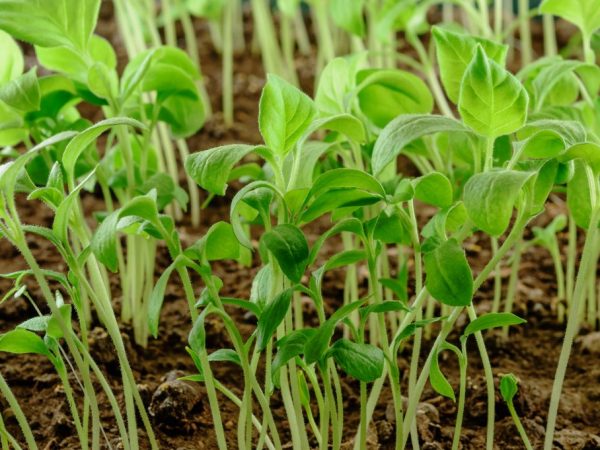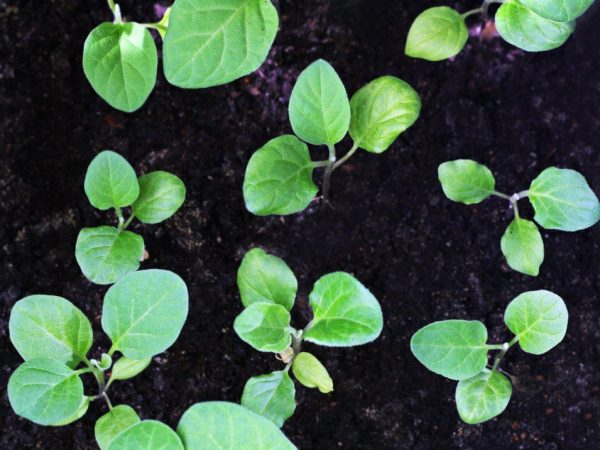How to transplant eggplant seedlings
Spring work in the country includes the obligatory germination of vegetable seedlings and their subsequent planting in the ground. For some garden crops, this becomes a serious test. To properly transplant eggplants, you should adhere to the rules of agricultural technology.

Transplanting eggplant seedlings
Features of the vegetable
Eggplant is a common crop in the south. For a more severe climate, the peculiarities of its growth and fruit ripening do not always end with a generous harvest. In regions with moderate weather conditions, early ripening varieties are chosen, the growing season of which is 100-120 days, while medium and late varieties are time-consuming and ripen in 130-150 days.
There are reasons that complicate the process of growing a vegetable:
- The optimum temperature for growing eggplant shoots is 18 ° C. For most cultivated plants, it does not exceed 12 ° C.
- Temperature readings are also important for seed germination. Eggplants do not like changes in temperature, they prefer warm days and nights. For this, it is important to maintain the regime at 18-26 ° C. A decrease in heat to 13 ° C causes the shoots to shed leaves, flowers and ovaries. Frosts can immediately destroy the plant.
The most suitable place for growing eggplants is considered to be a greenhouse. The use of temporary cover films also has a good effect on the harvest. Positive results are also observed when large areas covered with agrofibre are used.
Plants grow well in places open to the sun and air, do not tolerate shaded areas, so they should not be planted next to other tall plants, hedges or fences.
Seedling preparation
Gardeners rely on the planting calendar to select the most favorable days for planting vegetables. In the case of eggplant, the focus is on the choice of seed. For sowing, 2-3-year-old seeds are considered ideal: they have a better chance of germination and shorter periods compared to last year.
To germinate the selected seeds, cotton swabs or discs are used, which are moistened with warm melt or rainwater. Gauze fabrics can damage delicate sprouts and roots, therefore it is better to refuse to use them. Cotton pads moistened every day for 5-6 days make the seeds swell and release the roots.
An important step is the disinfection of germinated seeds. There are 2 main ways:
- With 3 ml of hydrogen peroxide, which is added per 100 ml of water. The liquid is brought to 40 ° C. In it for 10 minutes. soak the seeds just before sowing. Sometimes peroxide is replaced with potassium permanganate.
- For several hours, the seed is placed to germinate in hot, but not boiled, water. A similar action in the future will help seedlings resist disease.
Seedlings are immediately placed in separate containers. This way, the roots are damaged less during transplantation. The most convenient are peat cups.70% of their composition is peat, and 30% is cardboard, which disintegrates well in the soil within 30 days without causing any harm to it. Such pots have the main advantage: there is no need to plant plants from them, it is enough to place them together with a glass in the hole.
The soil for planting seeds should include components that are compatible with each other, including compost, sand, peat, purchased soil for seedlings, turf, manure. Any composition should occupy 2/3 of the container in which the seeds will be placed, then it is watered with warm water.
1-2 seedlings are placed in cups or pots to a depth of several centimeters, lightly sprinkled with earth and watered again. Compaction of the soil during sowing is not required, because eggplants need good soil aeration. The containers are covered with glass or polyethylene, placed in a warm, bright place with an air temperature of 25-26 ° C.
The cover is removed when half of the seedlings are visible. If this is not done, excessive moisture and heat will spoil the seedlings. Within 2 weeks after planting, all seeds placed in cups and pots should germinate. Among the 2 sprouted seedlings, the one that is stronger is chosen, the second is carefully removed from the container.
Organization of eggplant transplant

For planting, you should choose a sunny area
The picking of seedlings begins in accordance with weather conditions, when stable heat comes without sudden changes. For this, the end of May or the beginning of June is suitable. It is important not to delay the process so that the seedlings do not overgrow their capacity.
The land under the seedlings is watered with plenty of water a few hours before the pick: this will facilitate the task of transferring them to a new place.
Transplanting eggplant seedlings at the preparatory stage also includes hardening them in advance. Seedlings are taken out into the fresh air from the leeward sunny side, left for a while. The amplitude of such walks is gradually increased from 10 minutes. up to 2-3 hours.
An important step is preparing the soil for planting eggplants. The planning of open-air beds begins in the fall, while the preparation of a place for a greenhouse - no later than 3 weeks before the dive.
It makes sense to transplant plants to areas with some peculiarities:
- solar, protected from wind and draft;
- on a hill or level;
- with fertile and light soil;
- where greens, beans, potatoes, peas, carrots or beets were grown in the previous year.
Loamy soil is considered the best for transplanting eggplants, which can maintain a high level of moisture at the roots. Not all soils have such properties, but with improvised means, you can correct the situation by adding some missing components.
To increase the amount of moisture in the soil, rotted manure, sawdust and peat are used with the calculation of adding 2 buckets per 1 sq. m. The dense structure of alumina is loosened with coarse river sand, rotten compost or half-rotted sawdust. The presence of a large amount of sand in the soil is balanced by the introduction of peat, sawdust and compost, and the prevalence of the peat base is replaced with sod soil and compost.
The balanced soil is supplemented with fertilizers. For these purposes, wood ash, urea, potassium sulfate and superphosphate are used. The required amount of substances is introduced into the soil, after which the area is necessarily dug in violation of the upper layer to a depth of 30 cm. In the spring, after rain, the area for eggplants is dug up again, removing weeds, extra roots and debris.
Planting seedlings in the ground
At the end of May or at the beginning of summer, seedlings of homemade eggplants are transplanted into the ground. For this, the beds are specially prepared. High ridges up to 30-45 cm are poured with a distance between rows of at least 90-100 cm. In this case, 1 sq. m there are no more than 3 plants. They are placed in a checkerboard pattern: this facilitates care, and also allows the sun and fresh air to penetrate to them.
Ideally, it becomes possible to transplant eggplants 50-70 days after germination. Seedlings at that time should reach 30-35 cm in height, have 7 to 10 leaves on the stem. They choose strong seedlings that can adapt to new living conditions.
It is worth deepening the holes for seedlings by at least 15-20 cm. 1-3 liters of warm water are poured into each. Plants are transferred in peat pots or together with a lump of earth. In this case, the stem is deepened more deeply than it was before, raising the level of the ground to the beginning of the lower leaves.
When transferred to a greenhouse, eggplants are provided with high humidity by spraying the row spacing with a spray bottle.
They try to fertilize the seedlings regularly. This action is associated with the appearance of leaves. Fertilization is carried out after the 2nd, 5th, 7th and 10th leaves, as well as during the flowering period, the appearance of ovaries and when the fruits ripen. After transplanting, fertilizing for the seedling is organized on the 10th day, using a complex of mineral and organic fertilizers.
Plant care after transplant
Eggplant is characterized by whimsy and warmth. Caring for him has certain features:
- The vegetable loves frequent watering - the ground at the root should be moist, especially during the period when there is little rain.
- Eggplant often has problems with pollination. In this case, it is carried out manually.
- Plant feeding should be regular.
- Forming a plant to increase the yield includes pinching the top, excess lateral shoots. Excess flowers, deformed ovaries and infected dry leaves are cut off.
- The seedling is periodically inspected in order to notice disease damage or pest attacks in time. In such cases, when spraying, it is useful to use appropriate solutions.
- In order to have good air access to the root system, the soil is loosened at least 5 times over the summer.
- The fruits are picked in time during their technical maturity. Waiting for the full ripening of the eggplant on the bush, its overall yield decreases.
Conclusion
Growing a vegetable from eggplant seeds is not an easy task. A gardener who decides to take such a step will have to make every effort. You should be especially careful when choosing the soil for seedlings, organizing its transfer, drawing up an irrigation and fertilization scheme, providing the culture with comfortable lighting and temperature conditions.


